Annals of Environmental Science and Toxicology
Evaluation of water life cycle in production and implementation of Autoclaved Aerated Concrete (AAC), Non-Autoclaved Aerated Concrete (NAAC), Cellular Light Weight Concrete (CLC) blocks and prioritization with multi-criteria decision systems: Case study of production units in Mashhad City, Iran
Mohammad Mahdi Shahsavar1, Mahdi Najafzadeh2, Mehran Akrami3, Reza Aghlmand3 and Mohammad Gheibi3*
2Department of Civil Engineering, University of Shiraz, Shiraz Iran
3Department of Civil Engineering, Ferdowsi University of Mashhad, Iran
Cite this as
Shahsavar MM, Najafzadeh M, Akrami M, Aghlmand R, Gheibi M (2021) Evaluation of water life cycle in production and implementation of Autoclaved Aerated Concrete (AAC), Non-Autoclaved Aerated Concrete (NAAC), Cellular Light Weight Concrete (CLC) blocks and prioritization with multi-criteria decision systems: Case study of production units in Mashhad City, Iran. Ann Environ Sci Toxicol 5(1): 067-073. DOI: 10.17352/aest.000039Due to the development of the construction industry and the rapid growth of the construction industry, the consequences of the boundless human interventions in nature and the environment gradually became apparent. In line with these efforts, the concept of sustainable development was considered by the World Commission on Environment and Development, which means meeting the needs of the present generation without compromising the ability of the next generation to meet their needs. The present study intends to evaluate water consumption in the production and implementation of three types of high-consumption and competing blocks containing Autoclaved Aerated Concrete (AAC), Non-Autoclaved Aerated Concrete (NAAC), Cellular Light Weight Concrete (CLC) in the Iranian construction industry. Case studies were conducted on well-known factories approved by Standard Company in Mashhad, water consumption in the mentioned blocks was evaluated and compared during the production and implementation process. At the end of the study, the measured values were used as raw data for multi-criteria decision analysis of the Analytic Hierarchy Process (AHP), The Technique for Order of Preference by Similarity to Ideal Solution (TOPSIS), and ELimination Et Choix Traduisant la REalité (ELECTRE). The comparisons showed that the highest amount of water consumption belongs to the AAC block, and the lowest amount belongs to the CLC block. This conclusion indicates that the production of CLC block in terms of planning to conserve water resources is most in line with sustainable development policies.
Introduction
The first historical reports about using lightweight concrete and lightweight materials date back to ancient times. The Romans used pumice, a lightweight material, to build the Pantheon temple and the Colosseum Stadium. The use of lightweight concrete entered a new phase after the production of synthetic and processed lightweight aggregates in the early twentieth century. In 1918, Hayde used a rotary kiln to expand shale and clay, producing synthetic aggregates that were used to make concrete. Commercial production of expanded overhangs also began in 1928 [1-10]. One of the important issues and concerns in design, calculation, and construction is the structure's weight to withstand earthquake forces better [7,8]. Since all buildings today are made of metal or concrete, partitions and interior walls only play the role of separating the space. The lighter the materials used, the direct impact on reducing the weight of the structure. Therefore, replacing Autoclaved Aerated Concrete (AAC or Heblex) blocks with ordinary bricks and pottery is very effective in achieving this. The present study intends to compare the life cycle of these competitors in the consumer market of Iran's construction industry from the approach of water consumption in production and execution. The results of futures studies show that all industries will face limitations according to the type of water consumption in the coming years. Future resource constraints will drive governments' management policies to support water-scarce sectors further. In other words, the evidence suggests that the future incentive systems of the industry will be based on optimizing water consumption in production and implementation. The present study has used LCA (Life Cycle Assessment) method to evaluate this issue.
Suggestions from Allen and Shonnard (2001) [11], Owens (1997) [12], Curran (1996) [13], and Hunt, et al. (1992) [14] have also been extracted. The steps used in this study are as follows:
1. Determining the scope of border assessment.
2. Evaluating and listing the inventory of outputs and inputs.
3. Evaluating the water consumption of the data presented at the inputs.
4. Interpret the results and make suggestions.
The scope of the project is in the production cycle of AAC, NACC, and Cellular Light Weight Concrete (CLC) block factories. The process of producing blocks is up to more than 80% similar, so the comparison of water consumption in their production is divided into six stages (Figure 1) as follows:
1. Mixing and processing
2. Molding
3. Casting
4. Cutting
5. Curing and autoclaving
6. Packaging and transfer
It should also be noted that the measurements made for case studies were for the AAC block of Razavi Factories Complex and Parin Beton Company, for the Non-Autoclaved Aerated Concrete (NAAC) block of the Axon Production Complex, and for the CLC block of the Tagh Ahang and Gostaresh block companies.
In a study, Bihatia (2014) Comparing AAC and VSBK Brick blocks, concluded that the AAC block consumes 400 liters of water per cubic meter. This is while the water consumption for the production of VSBK block is 420 liters per cubic meter, which is 5% more than the AAC block [7]. In another study by Chusid, et al. (2009) [4], a qualitative comparison in the evaluation of the life cycle of AAC blocks and Burnt Clay Bricks in the block execution stage shows that the AAC compared to clay blocks during the execution process. It has a significant amount of optimization in water consumption. Another study by Satyanarayara at Hyderabad University of Technology found that AAC blocks optimized water consumption by 50% during the curing phase compared to other conventional brick blocks processed in India [5]. The results of research conducted by the Clean Development Mechanism in the United States show [6] that the amount of mixed water consumption per cubic meter of AAC block is 370 kg and the amount of water consumed as steam (recoverable) is 90 kg. The study also intends to first compare the amount of water consumption in each of the six stages of production and then evaluate and compare the water consumption of the blocks in the implementation stage. At the end of this study, using multi-criteria decision-making systems, these blocks are prioritized in terms of water efficiency. It should be noted that the measurements were made in production units in Mashhad.
Comparison of water consumption of AAC, NAAC, and CLC blocks in the production stage
Before analyzing and comparing the water consumption in different parts of the production of the mentioned blocks, it should be noted that the lightning operation in the blocks is possible in two methods as follows:
• Method 1: using bubbling techniques such as aluminum powder, pores can be created inside the blocks, and this bubbling can reduce the specific gravity of the block and create lightweight concrete. In fact, this technique requires only half the volume of the concrete mold, and the rest is done by bubbling (AAC and NAAC blocks).
• Method 2: In the next method, there is a minor bubbling operation, and the production process requires materials equal to the volume of the molds. But the consumables include cellulose light fibers, which, together with the liquid protein foam, is the lightning agent of the blocks. Of course, it should be noted that this method also uses floor builders, but these floor builders do not cause a significant increase in volume because the dimensions of their bubbles are between 0.3 mm to 0.8 mm and weigh a maximum of 90 grams per liter (CLC block).
Comparison in mixing and processing stage
One of the main differences between AAC blocks and NAAC and CLC blocks in the mixing and processing stage is the use of lime and gypsum during the production of Heblex. Experiments show that lime and gypsum have a significant role in water absorption in the mixture of materials in concrete mixers. This is while, during the production process, lime and gypsum are prepared and purchased in limestone and gypsum. (For economic optimization) Water is used for crushing the lime, and the measurement results show that this process consumes 300 ml of water per 1 kg of limestone. However, it should be noted that the effluent leftover from this process can be recovered during the concrete processing process in the mixers. The complete results of the comparisons are described in Table 1.
It should be noted that the amount of water used in the production of blocks can vary according to the management and technical policies of companies; In fact, it has been observed in many controls that economic issues such as fluctuations in material prices can cause major changes in the mixing design. It is worth mentioning that the factories producing building blocks (case studies: Mashhad factories) are fed by well water. Therefore, the process of water purification and processing as described in Figure 2 should be done on it.
Comparison in the molding stage
The molding section has a clear method in the production of all three types of blocks, with the difference that in the molding of light type 1 blocks (NAAC and AAC), the mold is not filled, and the filling rate of the mold is a function of the amount of aluminum powder used and density The final is the block, but in type 2 blocks (foam concrete and CLC), the formwork is completely filled, and the overall volume can be ignored due to the formation of bubbles. This part of the production operation has a highlighted point which is about the possibility of power outages, lack of proper quality of materials to use, production control policies, and any other factor that interferes with the production of lightweight concrete (mixing and processing operations) during the process, leads to waste generation. The management of this waste, which is actually non-standard concrete, is done with the help of water. According to the management policies of the producer, this wastewater can be recovered. In a case study of the Razavi Heblex factory (Mashhad), it was observed that there are channels for circulating the effluent water flow into the production network, which greatly optimizes water consumption. In fact, this policy leads to a closed cycle whose input will be less than when wastewater is not used. The results of the comparisons in the molding stage are described in Table 2.
Comparison in the casting stage
In the casting stage of these blocks, after heating to a temperature of about 70 ° C and creating a residence time to form hydrogen bubbles, the swelling operation occurs. But the remarkable thing about this is the non-uniform swelling of the block surfaces. In other words, after swelling, the surfaces of that block are distorted Figure 3. And this distortion must be smoothed out using leveling systems. Therefore, it can be concluded that after the smoothing process, the surface of the waste will appear, which must be managed by water. It is worth mentioning that the manufacturer always has a risk in adding materials, including aluminum powder. The reason for the risk is that if the molding to the desired level of the mold is not done correctly and completely, the whole mold will turn into waste; therefore, the design of processing, molding and casting processes is Over design, and with the help of this solution, the coefficient of economic risk is reduced. The results of the casting stage comparisons are as described in Table 3.
Comparison in the cutting stage
After the casting process, the blocks must be cut to prepare for the final operation. At this stage of the process, it should be noted that the amount of sawdust produced is a function of the dimensions of the requested block and the size of the concreting molds. In a case study, it was found that the Razavi block needs more longitudinal and transverse sections due to the larger dimensions of the molds and more variety in the production blocks, so it can be concluded that it produces more sawdust. The created sawdust management system is water-dependent, which is recovered properly in the mentioned production factories. The results of the cutting stage comparisons are described in Table 4.
Comparison in the curing stage
The autoclave stage only applies to AAC blocks, and the NAAC and CLC blocks do not have a steam curing stage. Research shows that the tank of the autoclave consumes 60-70 liters/day of water. In addition, it should be noted that the adsorption of moisture is done only by the solids of the blocks. However, practical studies and measurements show that about 20% of the volume of solids performs adsorption. The amount absorbed per cubic meter of a block is less than 1 liter, which can be ignored. For this reason, water consumption inside the autoclave is considered recoverable. It should be noted that after the autoclave process, the blocks stick to each other under high pressure, and it is necessary to add the separation step to the production process. During the separation phase, waste is generated that is managed by water. The steps of curing operations are described in Table 5.
Transportation and packaging
The transfer and packing process is done under the same conditions for all three AAC, NAAC, and CLC blocks; However, it should be noted that NAAC blocks, because they do not have an autoclave stage, absorb dew moisture when leaving the furnace and cutting, as well as in the open air. Its numerical value in each prepared block is calculated from thin surface relations, which is less than 10 ml, and the present study does not consider it in LCA calculations.
Comparison of water consumption of construction industry executive blocks in the implementation phase
In this part of the research, a comparison was made between AAC, NAAC, CLC, hollow brick, and fire brick in terms of water consumption during execution. It should be noted that the measurements were done practically by the present study, and the studied projects in different parts of the city were randomly selected. For each of the blocks, two projects were reviewed, and the comparison values were averaged in Table 6. It is worth noting that the measured values have been modified by the engineering judgment method.
Ranking of water consumption in AAC, NAAC, and CLC blocks
Different systems and methods can be used to prioritize the mentioned blocks in terms of water consumption. The present study has used three methods including Analytic Hierarchy Process (AHP), The Technique for Order of Preference by Similarity to Ideal Solution (TOPSIS), ELimination Et Choix Traduisant la REalité (ELECTRE), to rank the comparable factors and validate the results [1-3]. The results of the comparisons are shown in Figure 4.
To prioritize the blocks, criteria such as water consumption in the stages of processing and mixing, molding, casting, cutting, curing, separation, packaging and transfer, pre-installation, and post-installation have been used. AHP analysis was performed by Expert Choice 11 software using numerical and logical judgments, and also ELECTERE and Topsis methods were performed using Excel. The sensitive analysis paper is illustrated in Figure 5.
CLC blocks have less consumption of water in construction, especially when using other materials as an aggregate [15]. The water-safe property of the lightweight EPS1 block is acceptable and it is valuable in development work [16]. Due to their porous nature, lightweight aggregates have been shown to exhibit thermal properties that are advantageous when used in building materials such as lightweight concrete [17]. Using WPGA2 as an aggregate can be a solution to produce energy-efficient buildings [18]. From the experiments, it can be deduced that, generally, lightweight concretes have better thermal performance than normal-weight concrete [19]. The outcomes of another research contribute to the upcoming paradigm shift of utilizing recycled plastic in concrete and using concrete in general as a waste recycling system rather than just a building material; thus, minimizing the environmental impacts of both the concrete and plastic industries as well as helping developers reduce their life cycle costs [20].
=============================
1Extended Polystyrene
2Waste Polystyrol Glass Aggregate
Conclusion
No industry can be stable without the support of water resources. In fact, different industries are directly and indirectly dependent on water resources. The water crisis threatens the future of all industries. The increasing trend of water resource constraints indicates that management systems seek to direct their policies to support industries that conserve as much water resources as possible. The present study has compared partition walls in the construction industry by the LCA method, in terms of water consumption in production and execution, in three types of materials AAC, NAAC, CLC. At the beginning of the research, the products of 5 well-known industrial units were studied in the production of the desired blocks, and for the product of each of the factories, the water consumption life cycle was evaluated and compared. In the continuation of the research, AAC, NAAC, CLC, and two other brick types were compared. In the last step, the blocks were prioritized in terms of water consumption using AHP, ELECTERE, and Topsis multi-criteria decision-making methods. The results show that the highest water consumption in the production and execution of blocks is related to AAC, NAAC, and CLC, respectively.
- Saaty TL, Peniwati K, Shang JS (2007) The analytic hierarchy process and human resource allocation: Half the story. Mathematical and Computer Modelling 46: 1041-1053. Link: https://bit.ly/2U51m23
- Saaty TL, Sodenkamp M (2008) Making decisions in hierarchic and network systems. International Journal of Applied Decision Sciences 1: 24-79. Link: https://bit.ly/3h2aegQ
- Vaidya OS, Kumar S (2006) Analytic hierarchy process: An overview of applications. European Journal of Operational Research 169: 1-29. Link: https://bit.ly/3A0Hm1o
- Bergmans J, Nielsen P, Snellings R, Broos K (2016) Recycling of autoclaved aerated concrete in floor screeds: Sulfate leaching reduction by ettringite formation. Construction and Building Materials 111: 9-14. Link: https://bit.ly/3qnyMW1
- Chusid M, Miller SH, Rapoport J (2009) The building brick of sustainability. The Construction Specifier 1: 30-40. Link: https://bit.ly/3A01CQr
- Vince F, Aoustin E, Bréant P, Marechal F (2008) LCA tool for the environmental evaluation of potable water production. Desalination 220: 37-56. Link: https://bit.ly/3xPHDSB
- Bhatia N (2014) Life cycle assessment as a tool for material selection—a comparison of autoclaved aerated concrete and VSBK Brick Wall Assembly. In 30th international PLEA conference, December (pp. 1-8).
- Eng HKD (2008) Comparative environmental assessment of masonry wall units regarding manufacturing process.
- Hill N, Mason K (1997) How to calculate the energy efficiency of your lime burning process. Practical Action. World Cement. Link: https://bit.ly/3xVZZld
- Elliot S (2007) Embodied Energy Comparisons – Light Weight Aggregates and Pumice.
- Allen DT, Shonnard DR (2001) Green engineering: environmentally conscious design of chemical processes and products. American Institute of Chemical Engineers. AIChE Journal 47: 1906. Link: https://bit.ly/3jcbHnF
- Owens JW (1997) Life‐cycle assessment: Constraints on moving from inventory to impact assessment. Journal of Industrial Ecology 1: 37-49. Link: https://bit.ly/3dcs3Zy
- Curran MA (1996) Environmental life-cycle assessment. International Journal of Life Cycle Assessment 1: 179-179.
- Hunt RG, Sellers JD, Franklin WE (1992) Resource and environmental profile analysis: A life cycle environmental assessment for products and procedures. Environmental Impact Assessment Review 12: 245-269. Link: https://bit.ly/3jbkkPa
- Selvan SA, Asha P (2021) Experimental study on light weight concrete block with granulated corn con. International Journal for Research in Applied Science & Engineering Technology 9: 105-113. Link: https://bit.ly/2UFWjWt
- Moon AS, Patel A (2021) Sustainable Construction Using EPS Beads in Light Weight Blocks to form Innovative Foam Concrete as a Green Building Material. In IOP Conference Series: Materials Science and Engineering IOP Publishing 1017: 01200. Link: https://bit.ly/3vZHtqp
- Cavalline TL, Gallegos J, Castrodale RW, Freeman C, Liner J, et al. (2021) Influence of Lightweight Aggregate Concrete Materials on Building Energy Performance. Buildings 11: 94.
- Khan MS, Khattak A, Yaqoob M, Alam K (2021) Strength and Thermal Conduction assessment of light weight aromatic hydrocarbon waste polystyrol glass concrete. Journal of Engineering Science and Technology 16: 1082-1097. Link: https://bit.ly/3xRSA6h
- Lee YH, Chua N, Amran M, Yong Lee Y, Hong Kueh AB, et al. (2021) Thermal Performance of Structural Lightweight Concrete Composites for Potential Energy Saving. Crystals 11: 461. Link: https://bit.ly/3wXx7bY
- Alqahtani FK, Abotaleb IS, ElMenshawy M (2021) Life Cycle Cost Analysis of Lightweight Green Concrete Utilizing Recycled Plastic Aggregates. Journal of Building Engineering 40: 102670. Link: https://bit.ly/3j8GWzX
Article Alerts
Subscribe to our articles alerts and stay tuned.
 This work is licensed under a Creative Commons Attribution 4.0 International License.
This work is licensed under a Creative Commons Attribution 4.0 International License.
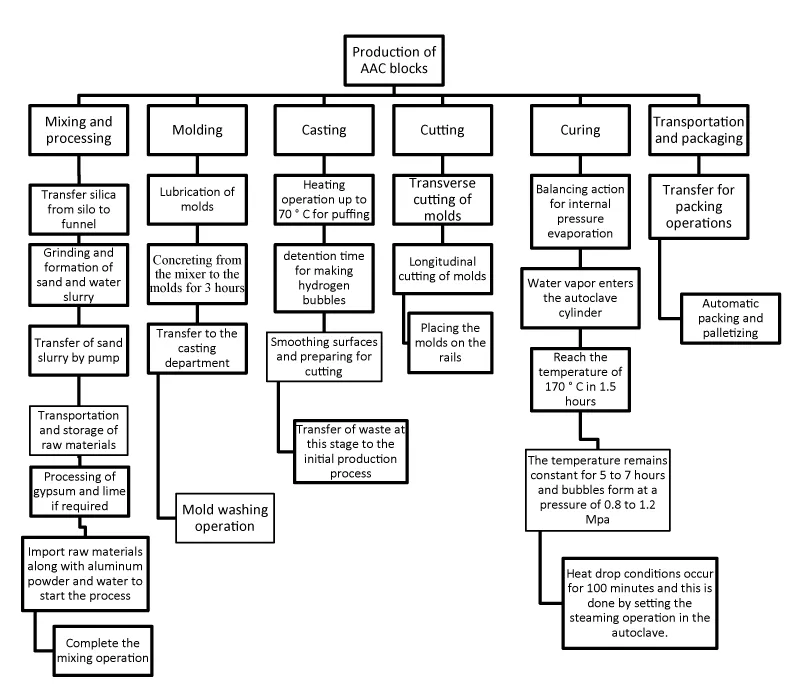

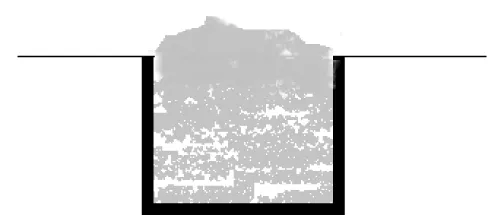
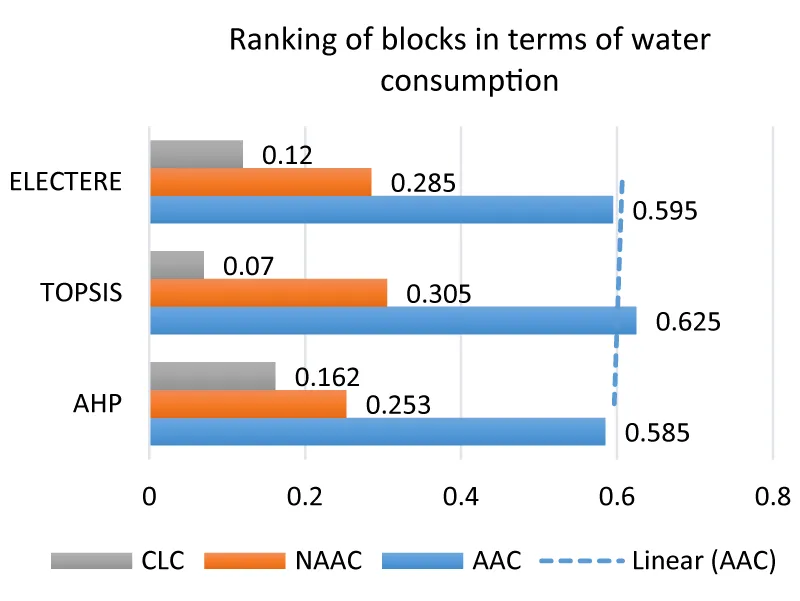
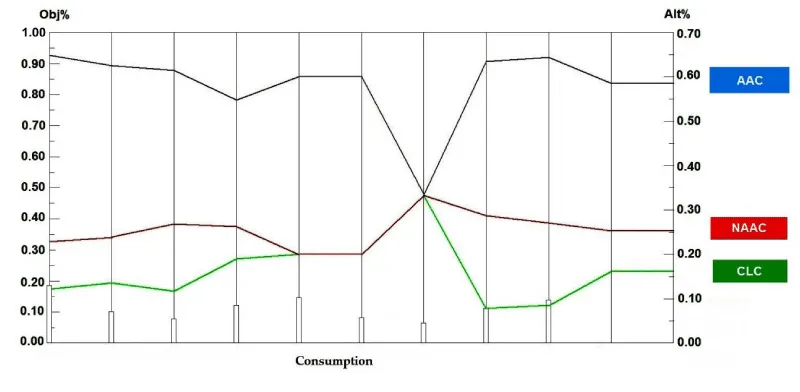
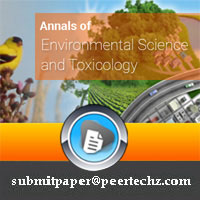
 Save to Mendeley
Save to Mendeley
